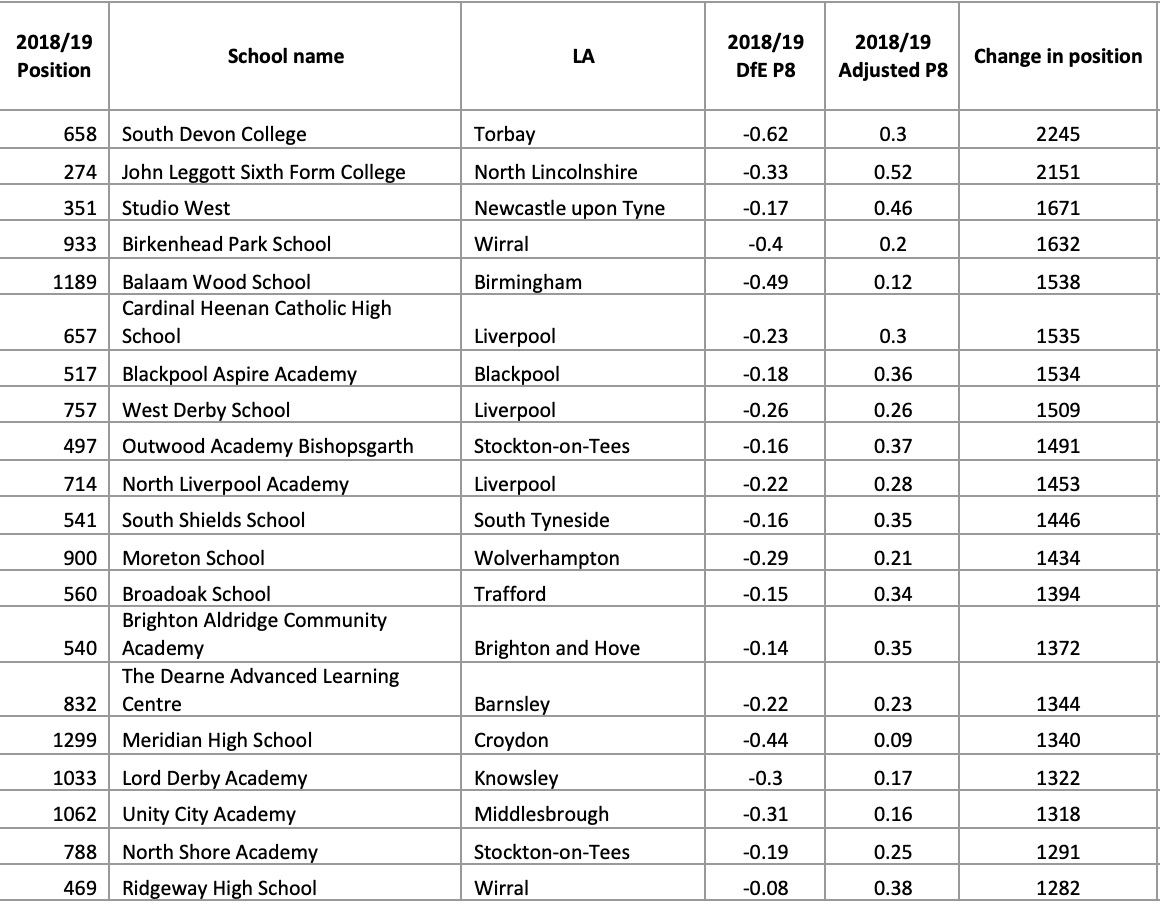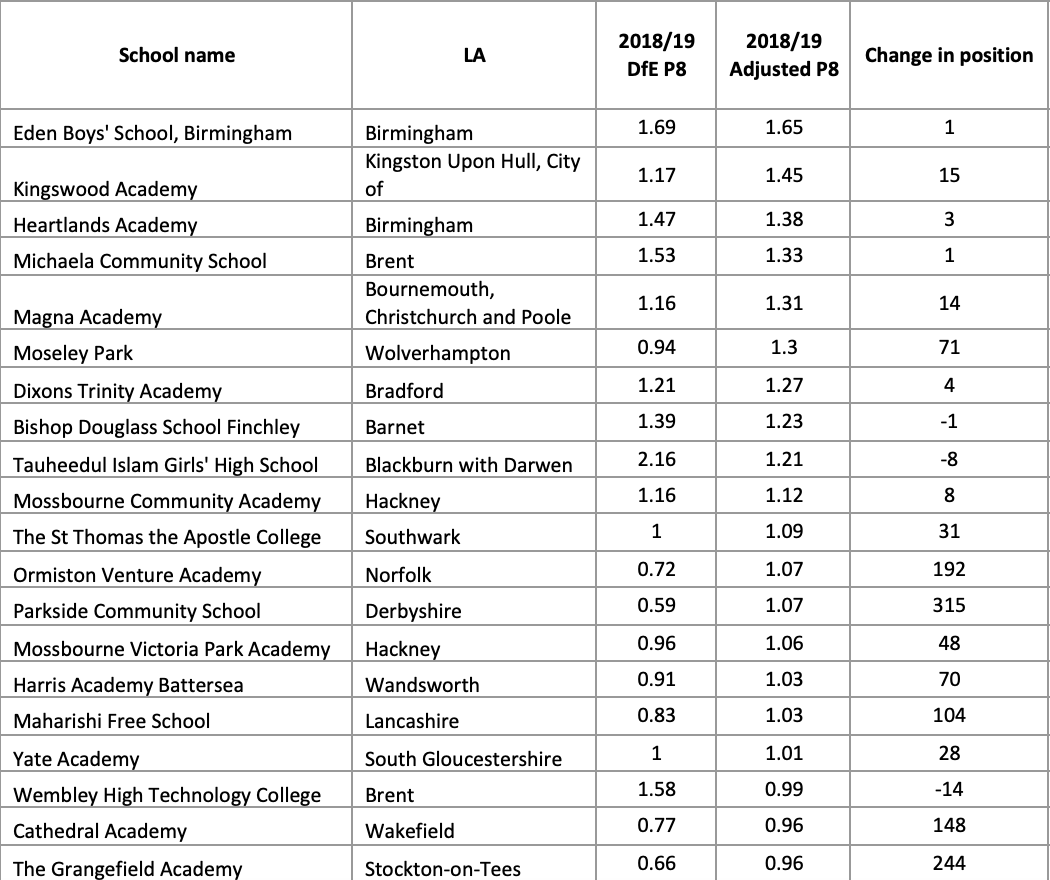Revealed: Schools that rise most in ‘fairer’ rankings
Share
Revealed: Schools that rise most in ‘fairer’ rankings
New school league tables are published today that attempt to take into account the background of the students taught.
The Northern Powerhouse Partnership has created a “Fairer Schools Index”, which uses an adjusted Progress 8 score.
It says its system is fairer that the official Department for Education tables because it factors in long-term deprivation, whether students are eligible for free school meals and student ethnicity and gender when measuring progress.
Tables: New fairer school index benefits Northern schools but London scores fall
School improvement: ‘How we can improve schools in the North’
Exclusive: Progress 8 penalises schools in white working-class communities
The official Progress 8 scores look at pupil performance in eight subjects at GCSE compared with their starting point in secondary education at the end of key stage 2.
A ‘fairer’ school league table?
Using the Fairer Schools Index measure, a fifth of schools saw their national league table position change by more than 500 places and 46 per cent of schools judged “well below average” or “below average” under Progress 8 moved up out of these bandings.
Of the 20 schools that climbed the most from their official DfE league table Progress 8 ranking, 15 were in the North of England.
Biggest 20 climbers in the Fairer Schools Index table

The Northern Powerhouse Partnership has also produced a table showing which schools are the highest-ranked in the country if their adjusted Progress 8 measure is used.
Top-ranked schools in the Fairer Schools Index





